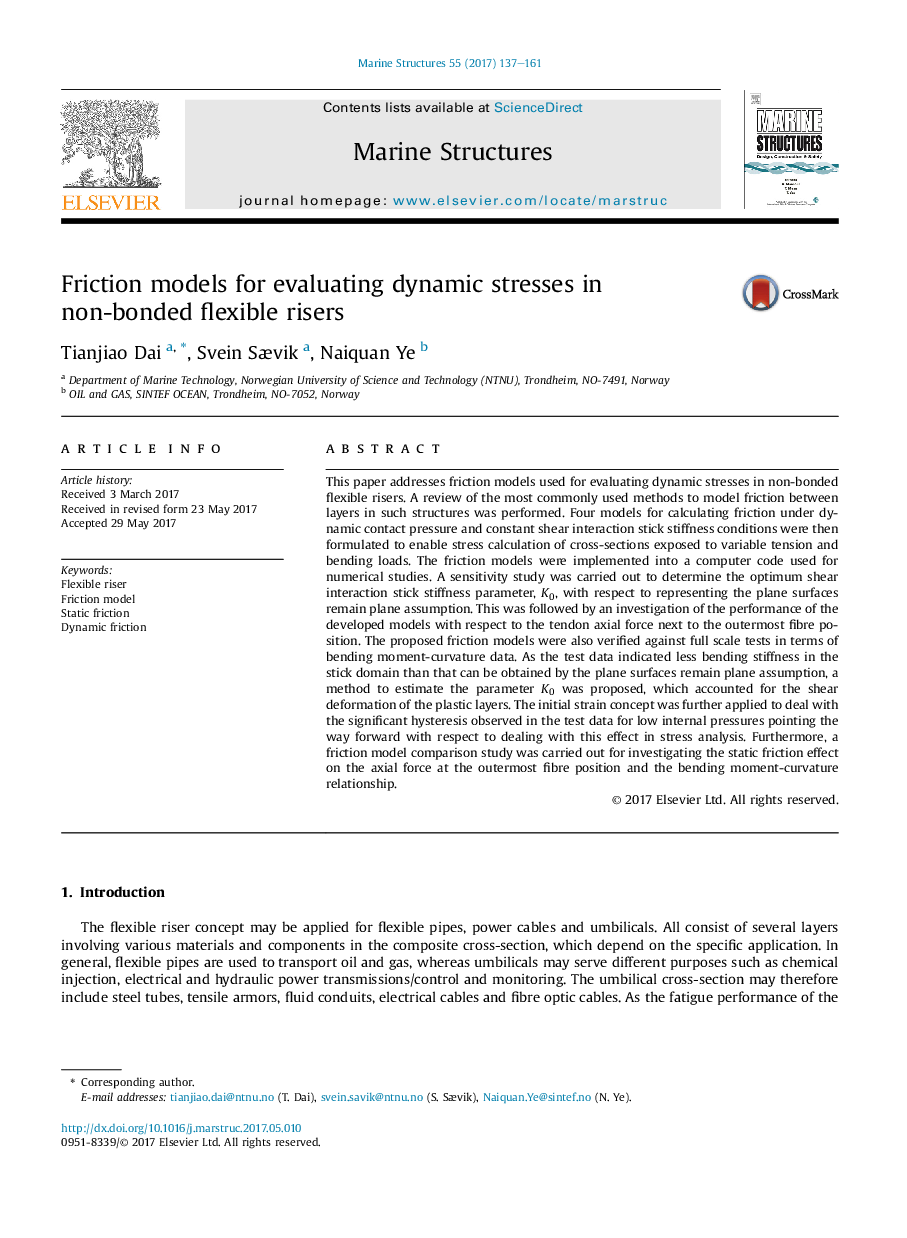| Article ID | Journal | Published Year | Pages | File Type |
|---|---|---|---|---|
| 4925038 | Marine Structures | 2017 | 25 Pages |
Abstract
This paper addresses friction models used for evaluating dynamic stresses in non-bonded flexible risers. A review of the most commonly used methods to model friction between layers in such structures was performed. Four models for calculating friction under dynamic contact pressure and constant shear interaction stick stiffness conditions were then formulated to enable stress calculation of cross-sections exposed to variable tension and bending loads. The friction models were implemented into a computer code used for numerical studies. A sensitivity study was carried out to determine the optimum shear interaction stick stiffness parameter, K0, with respect to representing the plane surfaces remain plane assumption. This was followed by an investigation of the performance of the developed models with respect to the tendon axial force next to the outermost fibre position. The proposed friction models were also verified against full scale tests in terms of bending moment-curvature data. As the test data indicated less bending stiffness in the stick domain than that can be obtained by the plane surfaces remain plane assumption, a method to estimate the parameter K0 was proposed, which accounted for the shear deformation of the plastic layers. The initial strain concept was further applied to deal with the significant hysteresis observed in the test data for low internal pressures pointing the way forward with respect to dealing with this effect in stress analysis. Furthermore, a friction model comparison study was carried out for investigating the static friction effect on the axial force at the outermost fibre position and the bending moment-curvature relationship.
Related Topics
Physical Sciences and Engineering
Engineering
Civil and Structural Engineering
Authors
Tianjiao Dai, Svein Sævik, Naiquan Ye,
